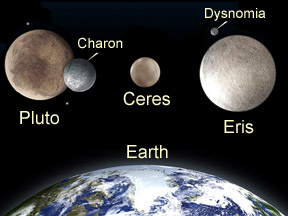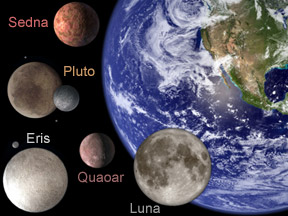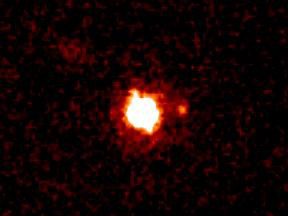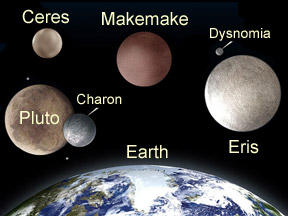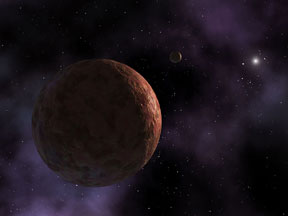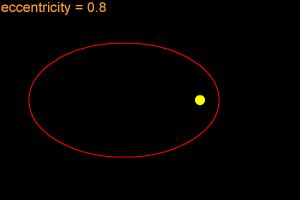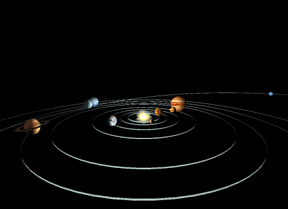Click on image for full size
Images courtesy of NASA, ESA, JPL, and A. Feild (STScI).
Dwarf Planets
In 2006 the International Astronomical Union (IAU) approved a new classification scheme for planets and smaller objects in our Solar System. Their scheme includes three classes of objects: "small solar system bodies" (including most asteroids and comets), the much larger planets (including Earth, Jupiter, and so on), and the new category of in-between sized "dwarf planets".
There are currently five official dwarf planets. Pluto, formerly the smallest of the nine "traditional" planets, was demoted to dwarf planet status. Ceres, the largest asteroid in the main asteroid belt between Mars and Jupiter, was also declared a dwarf planet. The three other (for now!) dwarf planets are Eris, Makemake, and Haumea. Pluto, Makemake, and Haumea orbit the Sun on the frozen fringes of our Solar System in the Kuiper Belt. Eris, also a Trans-Neptunian Object, is even further from the Sun.
What's the difference between regular planets and dwarf planets? As you might guess, it's partly an issue of size, with dwarf planets being smaller. But just how big does a planet need to be to become a full-fledged planet instead of a dwarf? You might think the minimum size requirement is arbitrary, but the size cutoff is actually based on other properties of the object and its history in the Solar System.
Both planets and dwarf planets orbit the Sun, not other planets (in which case we call them moons). Both must be large enough that their own gravity pulls them into the shapes of spheres (more or less). This rules out numerous smaller bodies like most asteroids, many of which have irregular shapes. Planets clear smaller objects out of their orbits by sucking the small bodies into themselves or flinging them out of orbit. Dwarf planets, with their weaker gravities, are unable to clear out their orbits.
Though there are just five dwarf planets now, their number is expected to grow. Scientists estimate there may be 70 dwarf planets amongst outer solar system objects that have been discovered already. Since we don't know the actual sizes or shapes of many of the objects we've found (because they are so far away), we can't yet determine whether they are actually dwarf planets or not. More observations and better telescopes will help us determine which other objects are dwarf planets. Astronomers speculate that there may be 200 or so dwarf planets out through the distance of the Kuiper Belt, an icy band of frozen planetoids on the edge of our Solar System.


